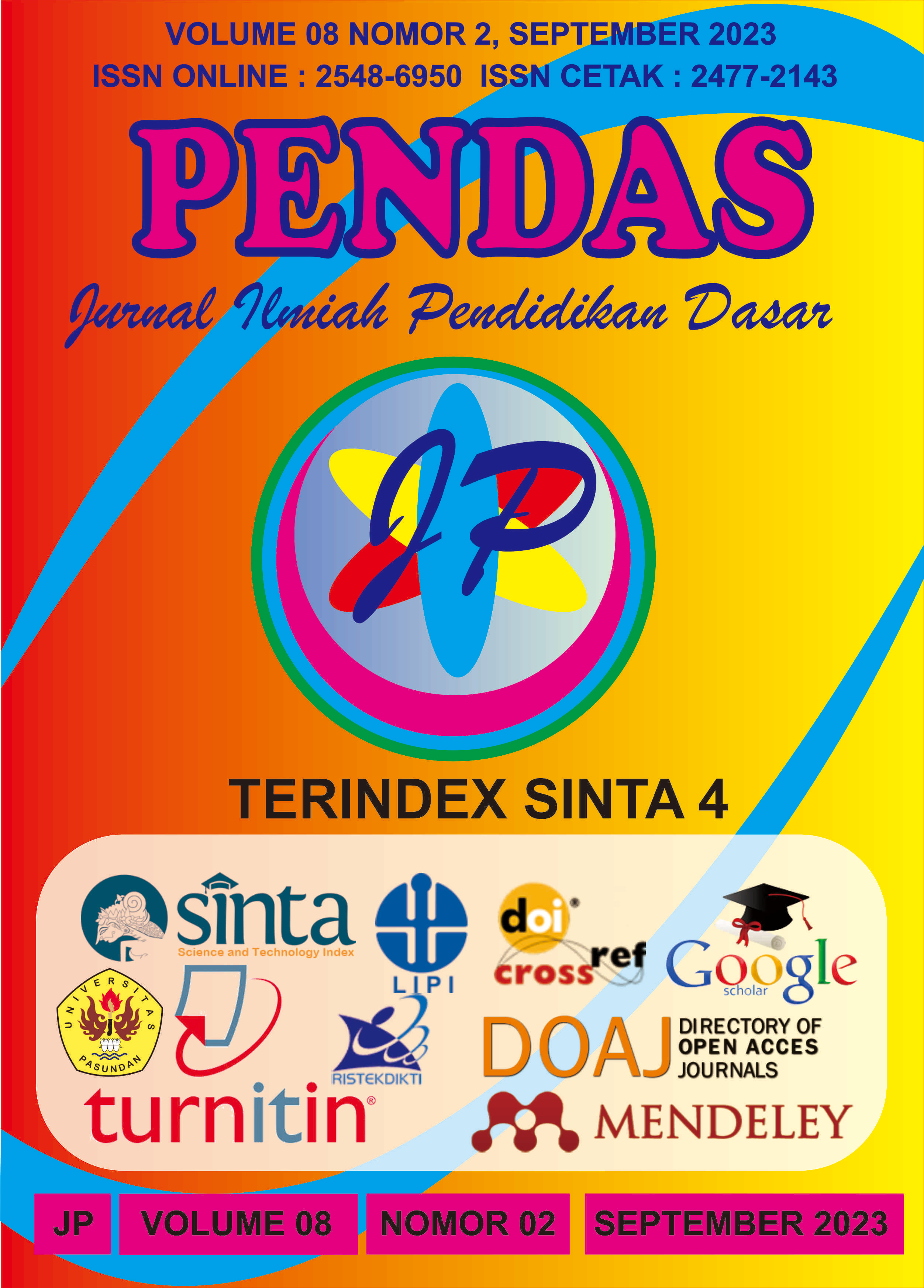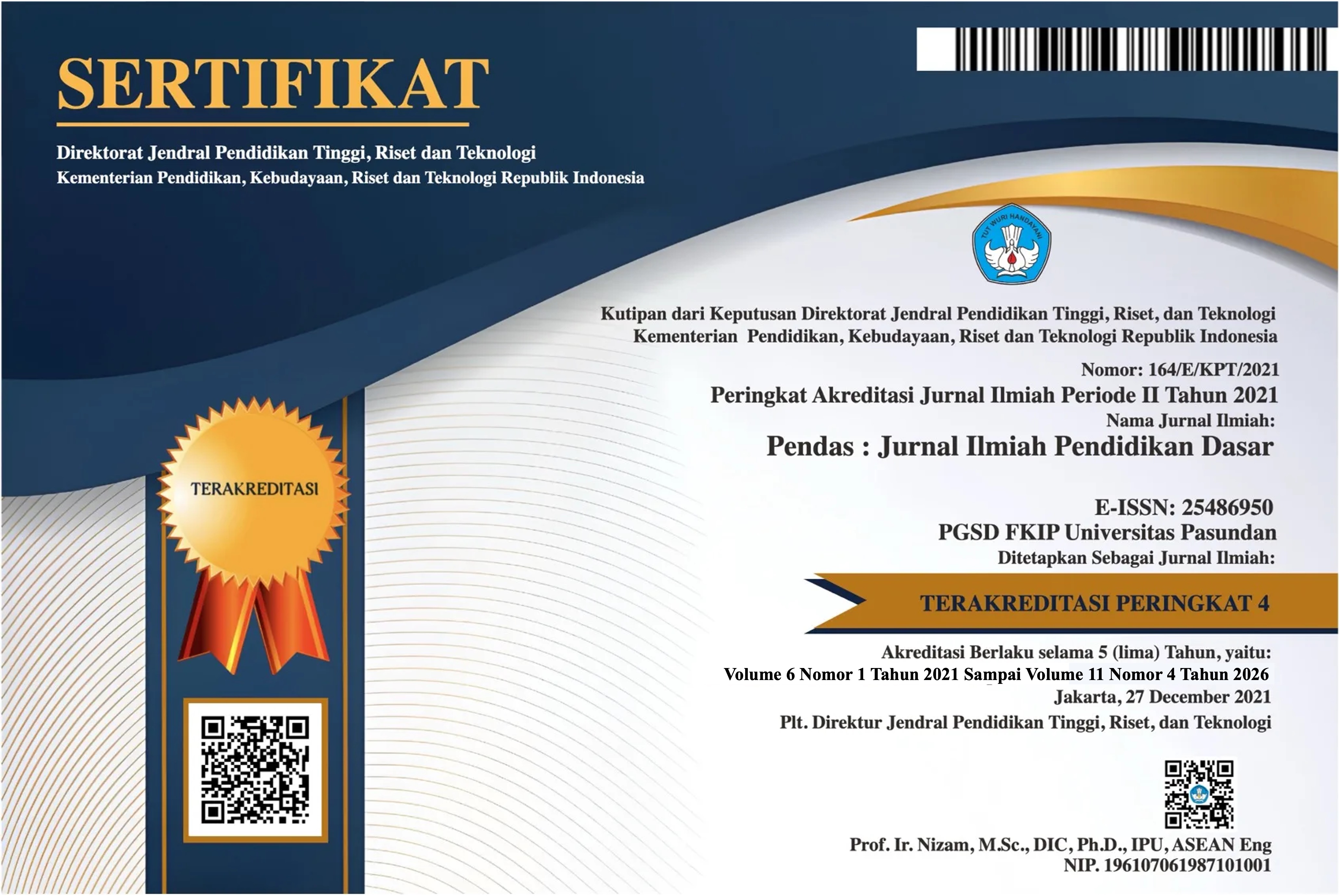ANALISIS MOTIVASI BELAJAR SISWA SEKOLAH DASAR DALAM PENERAPAN METODE MIND MAPPING DI KELAS IV
DOI:
https://doi.org/10.23969/jp.v8i2.8659Keywords:
Motivation to learn, Mind MappingAbstract
The problems that occur in grade 4 regarding students lack enthusiasm in learning, there are several factors that influence including the current condition of education in Indonesia experiencing changes in the implementation of the curriculum, namely the independent curriculum, this can cause elementary school students to experience difficulties. This is what causes delays in student education in schools. Lack of use of interesting learning methods or media, this education is very important so that students understand it more easily. The purpose of this study was to analyze the learning motivation of elementary school students using the mind mapping method in social studies learning in class 4 MI Muhammadiyah 6 Sekapuk. This type of research uses descriptive qualitative where the researcher describes, summarizes the situation that occurred during the study. The purpose of this research method is to provide an overview to researchers about how research is carried out, so that problems can be solved. Social studies subjects at MI Muhammadiyah 6 Sekapuk school, the learning process which is carried out on Friday is less effective because it is cut off by the fasting break so that learning activities have not been completed according to the specified time, so the teacher tries to use the mind mapping method to make learning easier for students. students and can spend sufficient time at school. By using the mind mapping method, students' learning motivation is more open, besides that students more easily understand the material that has been given.Downloads
References
Guide, Q. S. (2006). How to Mind Map {®}. 170–173.
Windura, S. (2013). Be An Absolute Genius: Panduan Praktis Learn How To Learn Sesuai Cara Kerja Alami Otak. Jakarta: PT Elex Media Komputindo.
Suparyanto dan Rosad. (2020). Implementasi Pendidikan IPS Dalam Pembelajaran IPS Di Sekolah. Suparyanto dan Rosad, 5(3), 248–253.
Uno, H. B. (2017). Teori motivasi dan pengukurannya: Analisis di bidang pendidikan. Bumi Aksara.
Sugiyono. (2016). Metode penelitian kuantitatif, kualitatif dan R&D. ALFABETA, cv.
Afiani, K. D. A., & Faradita, M. N. (2021). Pelatihan Penggunaan Media Edmodo Bagi Guru SD Negeri Geluran III Kabupaten Sidoarjo sebagai Upaya Pembelajaran Literasi Digital. International Journal of Public Devotion, 4(1), 30–36.
Afiani, K. D. A., & Putri, A. F. (2022). Penggunaan Realistic Mathematis Education (RME) Sebagai Hasil Belajar Matematik Materi Pecahan Sederhana di Abad 21. PROCEEDING UMSURABAYA, 1(1).
Aprelia, D. U., Setiawan, F., & Mirnawati, L. B. (2022). Motivasi Belajar Siswa Kelas 4 SD Muhammadiyah 3 Surabaya Pada Pelaksanaan Pertemuan Tatap Muka ( PTM ) Terbatas Pendahuluan Pendidikan adalah sebuah usaha yang dilakukan oleh individu secara sadar dan terencana untuk mewujudkan proses pembelajaran yang e. 6(2), 182–192.
Azahro Aurellia, E. K., & Arina, R. (2023). Peningkatan Hasil Belajar Analisis Data Menggunakan Model Problem Based Learning (PBL) Kelas I Pada Kurikulum Merdeka Di Sekolah Dasar. 08.
Carolus Borromeus Mulyatno. (2022). Jurnal Pendidikan dan Konseling. Jurnal Pendidikan dan Konseling, 4(3), 1349–1358.
Diana, E., & Rofiki, M. (2020). Analisis Metode Pembelajaran Efektif Di Era New Normal. Jurnal Review Pendidikan dan Pengajaran (JRPP), 3(2), 336–342.
Gloria, E., 1, P., & Wardani, K. W. (2022). Pengembangan Buku Saku Berbasis Mind Mapping untuk Meningkatkan Hasil Belajar IPS Siswa Sekolah Dasar. Jurnal Basicedu, 6(6), 9715–9725. https://jbasic.org/index.php/basicedu/article/view/4172
Haryanto. (2003). UU20-2003Sisdiknas. Demographic Research, 49(0), 1-33 : 29 pag texts + end notes, appendix, referen.
Koswara, D., & Halimah, D. (2008). Bagaimana menjadi guru kreatif. Bandung: Pribumi Mekar.
Lestari, S. (2022). Jurnal Pendidikan dan Konseling. 4(3), 1349–1358.
Mirnawati, L. B., Fajar Setiawan, & Rosadi, & A. (2019). Pengembangan Model Pembelajaran Inovatif Dengan Menggunakan Mind Mapping Untuk Meningkatkan Keterampilan Menulis Karangan Narasi Siswa Kelas II SD.
Muhammad, M., Setiawan, F., & Afiani, K. D. A. (2021). Analisis Proses Pembelajaran dalam Jaringan (Daring) Masa Pandemi Covid-19 pada Guru Sekolah Dasar Muhammadiyah Se-Kota Surabaya. Syntax Literate ; Jurnal Ilmiah Indonesia, 6(2), 949. https://doi.org/10.36418/syntax-literate.v6i2.2194
Sadirman. (2018). Pengaruh Kepemimpinan Dan Kemampuan Berkomunikasi Terhadap Motivasi Belajar. Dinamika Pendidikan, 1(2), 10–35.
Wulan Sari, N., Budiono, & Andhini Rachmawati, D. (2023). Penerapan Model Pembelajaran Problem Based Learning (PBL) Untuk Meningkatkan Hasil Belajar Siswa Kelas IV Materi Bangun datar Datar Segi Empat SDN Purwantoro 1 Kota Malang. 09.
Downloads
Published
Issue
Section
License
Copyright (c) 2023 Pendas : Jurnal Ilmiah Pendidikan Dasar

This work is licensed under a Creative Commons Attribution 4.0 International License.



















